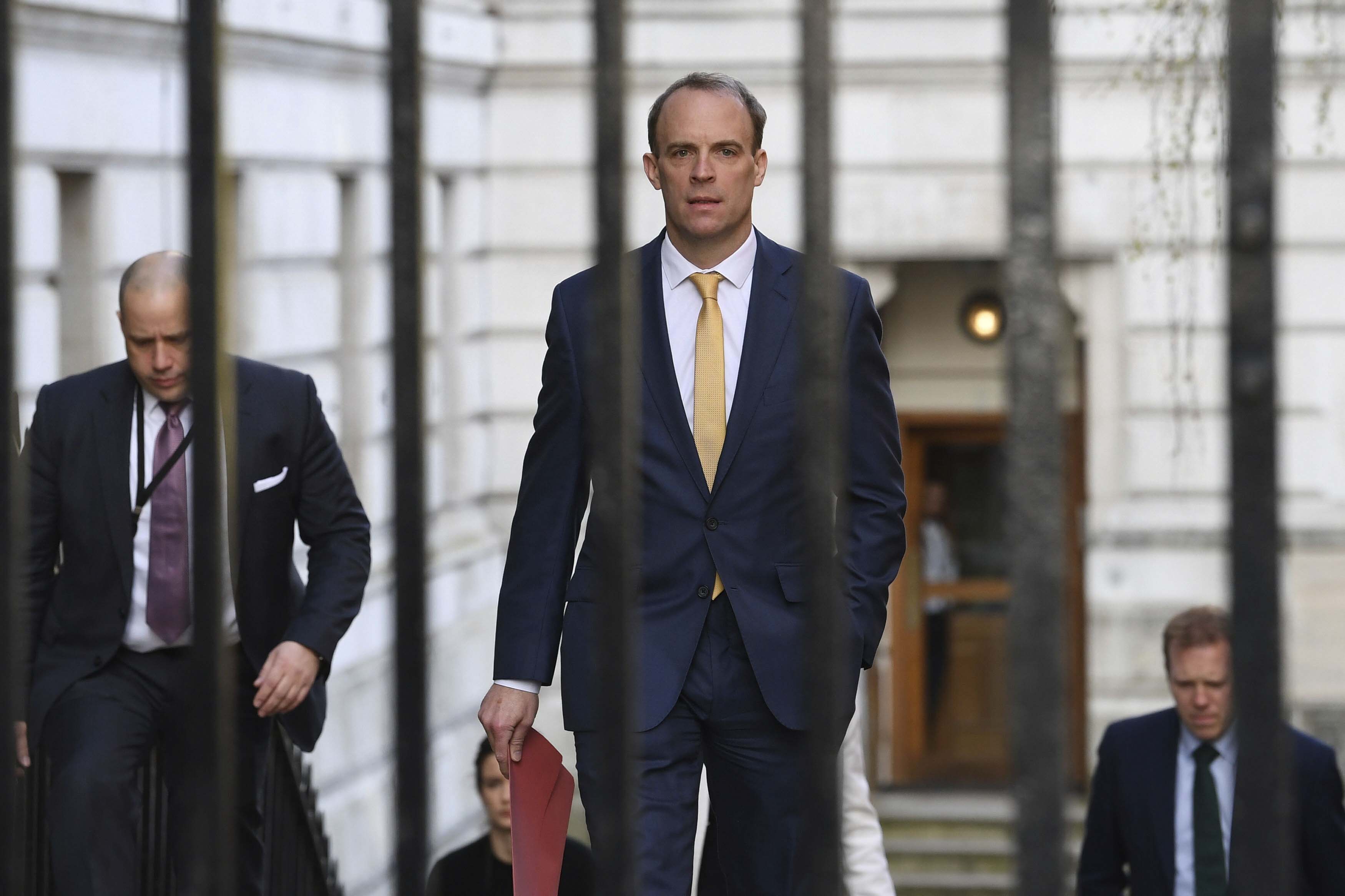
“The prime minister asked me as first secretary to deputize for him, where necessary, in driving forward the government’s plans to defeat coronavirus,” 46-year-old Raab told the BBC on Monday night.
He has taken over the chairmanship of the daily COVID-19 meeting, which coordinates the government response to the crisis, and will also oversee the four cabinet committees dealing with the pandemic, focused on the health service, the economic response, the international response and the management of Whitehall respectively.
He will continue working from the Foreign Office rather than moving to No.10, and will not have power to hire and fire ministers or officials, Downing Street said Tuesday.
Raab will chair National Security Councils if needed and the Cabinet will be able to launch military action if required. But he will not have to re-write the so-called „letters of last resort,“ which spell out what to do if the U.K. is subject to a nuclear attack. The existing letters written by Johnson will continue to stand.
He will also not get to take over the regular meetings the prime minister has with the queen on a Wednesday evening. Instead senior officials will liaise with Buckingham Palace.
If Raab becomes incapacitated, Chancellor Rishi Sunak will take over as the next in command.
Downing Street insisted there is no power vaccum in government. “There is a clear plan: the government’s response to the epidemic as set out by the prime minister,“ a spokesman for Johnson said. „The government and the Cabinet are working together to implement that plan.”
He added: “No.10 is fully operational in line with every other part of the government. Where staff are able to work from home they have been advised to do so.”
Beyond the details above, the machinery of government is open to interpretation. The Cabinet Manual, the closest thing the U.K. has to a written constitution, is silent on what happens when a prime minister is unable to turn up for work.
It is not only Johnson and Raab whose roles have so far been affected by the virus: The global pandemic has stretched its tentacles all across Downing Street and Whitehall. Here are a few of those who might have to step up — or step aside:
Rishi Sunak: As Chancellor he is the second most powerful member of the government in normal times, and is the next in line to take over if Raab is unable to work. 39-year-old Sunak’s handling of the economic response to the crisis has won him plaudits from the public, according to polls, so he could be a popular stand-in. He has very close ties with No. 10 after a tweak to government machinery left the prime minister’s office and the Chancellor of the Exchequer sharing the same panel of advisers. None of the joint aides are currently known to be off sick, though some are working from home, like much of Whitehall.
Michael Gove: The Chancellor of the Duchy of Lancaster has a crucial job running Whitehall’s response to the coronavirus — but announced on Tuesday that he too was self-isolating after a family member developed symptoms. Gove did say, however, that he would continue working as usual. Already entrusted by Johnson with implementing the Brexit Withdrawal Agreement, 52-year-old Gove often takes the daily Downing Street press conference on the virus response and is frequently sent out to talk to the press, as he did on Tuesday morning.
Matt Hancock: The 41-year-old health secretary caught the virus but was back at work a week later to announce a revamped strategy on testing and open the new Nightingale Hospital, giving extra capacity to the NHS in London. He is also clearly trusted and won plaudits when he ran the daily press conferences.
Dominic Cummings: The infamous chief adviser to Johnson has been self-isolating at home with symptoms. He was last seen running out of Downing Street on March 27 shortly after Johnson was confirmed as having tested positive for coronavirus.
Eddie Lister: The other top adviser to Johnson has not been in No. 10 since the lockdown was announced, according to the Times. Aged 70, Lister is in a high-risk group.
Lee Cain: The Downing Street communications director was reported to have had symptoms last week but is now thought to be back in action. Conservative election campaign director Isaac Levido was drafted into Downing Street to help with the communications strategy and could step up if more key advisers become unable to contribute. Paul Stephenson, the former communications director for Vote Leave, has also offered to lend a hand if needed.
Mark Sedwill: The boss of Whitehall on the civil service side will take on a crucial role supporting Raab in the days ahead. The 55-year-old career diplomat is said to have broken the news about the prime minister being in hospital to the rest of the Cabinet last night.
Chris Whitty: The chief medical officer took time off work with coronavirus symptoms but returned on Monday and took part in the daily Downing Street press conference. Whitty will be a crucial figure whom Raab and other Cabinet ministers will listen to as they make decisions without the guidance of the prime minister. His deputy Jenny Harries has become a regular face at the daily press conferences.
Patrick Vallance: The chief scientific officer is a regular at the daily Downing Street press conferences and is expected to make an appearance on Tuesday night. On Monday his deputy Angela McLean was at the briefing in his place.
Source: politico.com
See more here: news365.stream






